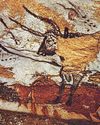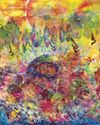
In the expression ‘the meaning of life’, people more often than not mean ‘purpose’ when they refer to ‘meaning’. The real question such people are asking is actually ‘What is the purpose of life?’.
Things which have a purpose are often created for that purpose, such as man-made artefacts. One could establish an analogy or comparison between life and tools. The purpose of a tool is present at or before it is manufactured. A garden fork has been made to help gardeners dig, a tap is made to control the flow of water, and so on. The maker of the object and the person who uses the object both know this purpose, and the correct use of the object is seen as being use in line with the maker’s design. However the object could be used differently – the tap could be used as a hook to hang something from, and in the hands of a psychopathic killer the garden fork could be used as a rather gruesome weapon. So the ‘purpose’ of an artefact has two major senses; its intended use at the point of design and creation, and its intended use at the point of use. The latter may also be described as a misuse.
Denne historien er fra December 2021 / January 2022-utgaven av Philosophy Now.
Start din 7-dagers gratis prøveperiode på Magzter GOLD for å få tilgang til tusenvis av utvalgte premiumhistorier og 9000+ magasiner og aviser.
Allerede abonnent ? Logg på
Denne historien er fra December 2021 / January 2022-utgaven av Philosophy Now.
Start din 7-dagers gratis prøveperiode på Magzter GOLD for å få tilgang til tusenvis av utvalgte premiumhistorier og 9000+ magasiner og aviser.
Allerede abonnent? Logg på

Metaphors & Creativity
Ignacio Gonzalez-Martinez has a flash of inspiration about the role metaphors play in creative thought.

Medieval Islam & the Nature of God
Musa Mumtaz meditates on two maverick medieval Muslim metaphysicians.

Robert Stern
talks with AmirAli Maleki about philosophy in general, and Kant and Hegel in particular.

Volney (1757-1820)
John P. Irish travels the path of a revolutionary mind.

IT'S A WONDERFUL LIFE
Becky Lee Meadows considers questions of guilt, innocence, and despair in this classic Christmas movie.

"I refute it thus"
Raymond Tallis kicks immaterialism into touch.

Cave Girl Principles
Larry Chan takes us back to the dawn of thought.

A God of Limited Power
Philip Goff grasps hold of the problem of evil and comes up with a novel solution.

A Critique of Pure Atheism
Andrew Likoudis questions the basis of some popular atheist arguments.

Exploring Atheism
Amrit Pathak gives us a run-down of the foundations of modern atheism.